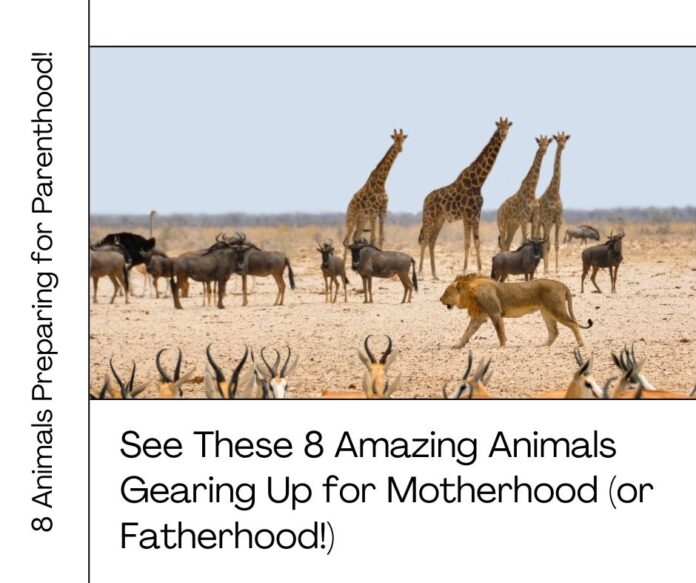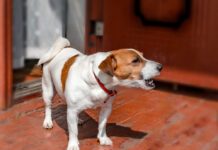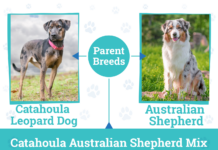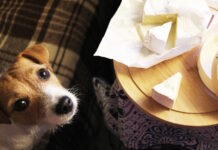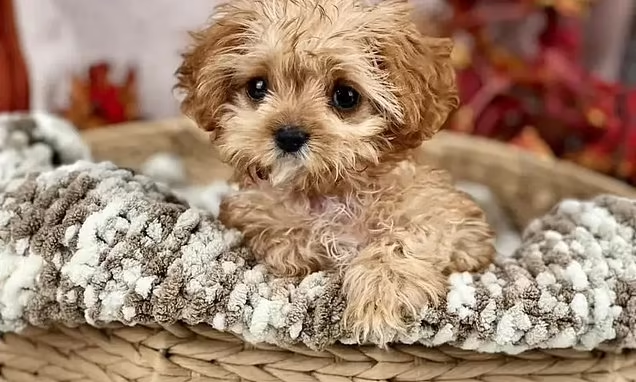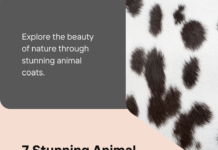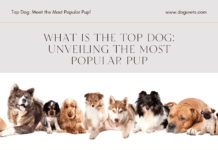Last Updated on May 9, 2024 by Dog Lover
See These 8 Amazing Animals Gearing Up for Motherhood (or Fatherhood!)
Have you ever witnessed the quiet awe-inspiring moment when an animal prepares to welcome new life into the world?
It’s a time brimming with anticipation, a delicate dance between nurturing instincts and primal preparation. From the meticulously crafted nests to the hormonal shifts within their bodies, the animal kingdom puts on a breathtaking display of parenthood in the making.
In this comprehensive guide, we’ll embark on a journey to witness eight fascinating creatures on the cusp of parenthood.
We’ll delve into their unique gestation periods, marvel at their parenting behaviors, and uncover the incredible ways they prepare their nests, dens, or burrows for the arrival of their precious offspring.
This isn’t just about cute animal pictures (although, let’s be honest, there will be some of those too!).
We’ll explore the science behind animal pregnancy, the evolutionary adaptations that have ensured their survival, and the heartwarming parallels we can draw between the animal kingdom and our own human experience of parenthood.
So, grab your metaphorical cup of cocoa, settle in for a cozy read, and prepare to be amazed by the incredible world of animal mothers (and fathers!)
Here’s a sneak peek at the amazing animals we’ll be meeting:
- The Elephant Matriarch: A Tower of Strength
- The Sloth’s Slow and Steady Approach
- The Kangaroo’s Double Dose of Motherhood
- The Seahorse Dad: Redefining Gender Roles
- The Hyper-Social Emperor Penguin Huddle
- The Weaverbird’s Architectural Marvels
- The Crocodile’s Fiercely Protective Nature
- The Monarch Butterfly’s Final Act of Love
Let’s dive in!
The Elephant Matriarch: A Tower of Strength
The majestic African elephant holds the record for the longest gestation period in the animal kingdom, clocking in at a whopping 22 months!
Imagine carrying a little one for almost two years! During this extended pregnancy, the matriarch, the wise elder female of the herd, takes on a crucial role.
She provides social support and protection to the expecting mother, ensuring she has access to the best food and water sources.
Did you know? Elephant calves are born with impressive social skills, readily integrating into the herd’s complex social structure.

The Sloth’s Slow and Steady Approach
While the elephant takes the cake for the longest pregnancy, the sloth takes the gold medal for the most relaxed approach. Their gestation period, lasting a leisurely six months, might seem short compared to the elephant’s, but it’s actually quite long for an animal their size.
So, how do these masters of hanging around prepare for parenthood? Well, it’s all about energy conservation.
Sloths have a slow metabolism, so elaborate nest building or strenuous foraging isn’t really their thing. Instead, they rely on their arboreal lifestyle.
Momma sloth simply chooses a sturdy branch high up in the canopy, a safe haven for her single offspring.
Interesting fact: Baby sloths come into the world with sharp claws, allowing them to cling to their mothers’ fur from the very beginning. This close physical contact is essential for warmth and navigation through the dense rainforest canopy.
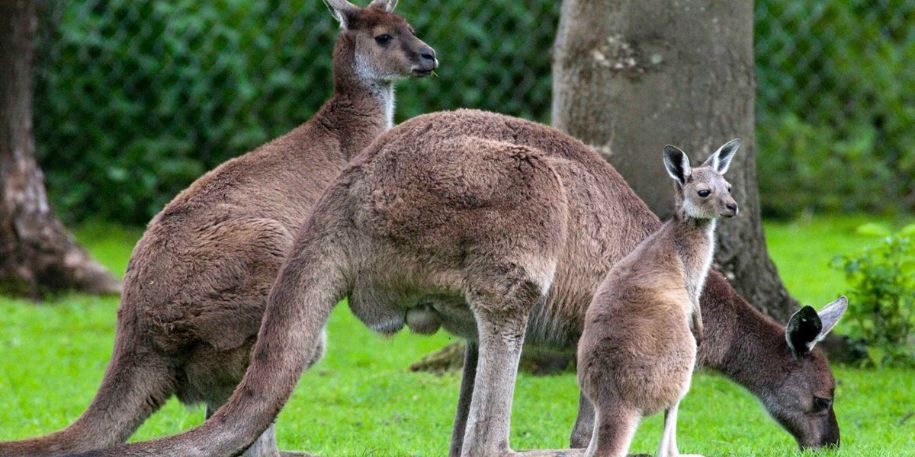
The Kangaroo’s Double Dose of Motherhood
Kangaroos are fascinating creatures when it comes to reproduction. They have a remarkably short gestation period of around 30-35 days.
However, here’s the twist: a female kangaroo can be pregnant with one joey while simultaneously nursing another! This incredible phenomenon is called embryonic diapause.
Essentially, the development of one embryo can be paused while the mother focuses on nurturing her already born joey.
Survival strategy alert! This adaptation allows kangaroos to reproduce even during times of scarce resources. If conditions are good, the paused embryo will resume development, leading to the birth of a second joey. Pretty amazing, right?

The Seahorse Dad: Redefining Gender Roles
Seahorses are the ultimate champions of defying expectations. In this unique species, it’s actually the male who gets pregnant!
The female seahorse deposits her eggs into a specialized pouch on the male’s abdomen. Here, the eggs are fertilized and develop for several weeks, with the male providing vital nutrients and oxygen to his brood.
Nature’s ingenuity at its finest! This incredible adaptation allows the female to continue foraging and producing eggs, maximizing reproductive success for the seahorse pair.
Now, let’s travel to the coldest continent on Earth to witness a heartwarming display of communal parenting – the emperor penguin huddle!

The Hyper-Social Emperor Penguin Huddle
Emperor penguins brave the harsh Antarctic winter in a truly remarkable way – the huddle. These social butterflies huddle together in massive groups, sometimes numbering in the thousands, to conserve body heat and protect their eggs and chicks from the brutal winds and freezing temperatures.
Emperor penguin dads play a starring role! After the females lay their eggs, they embark on long foraging journeys at sea.
The males, left behind, huddle together, taking turns on the outside of the formation to shield the vulnerable eggs and chicks from the elements.
This incredible act of collective parenting ensures the survival of their offspring in one of the harshest environments on Earth.
Did you know? Emperor penguins have a super-power – they can sense even the slightest temperature changes! This allows them to subtly adjust their position within the huddle to maintain optimal warmth for everyone.
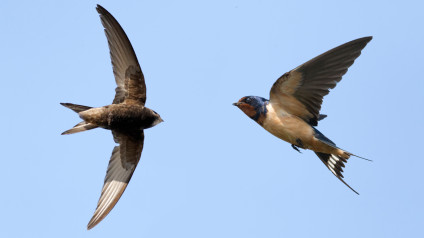
The Weaverbird’s Architectural Marvels
Weaverbirds are nature’s master architects. These tiny birds construct elaborate nests that are true works of art.
From intricately woven baskets to hanging pouches, each nest is a testament to the weaverbird’s remarkable skill and dedication.
But why such elaborate abodes? These nests serve as a safe haven for the developing chicks, protecting them from predators and the elements. Additionally, the complex weaving techniques can deter larger birds from attempting to take over the nest.
Fun fact: Some weaverbird species are known for their impressive colony nesting behavior. Hundreds of individual nests can be woven together, creating a massive communal structure that provides additional protection and social interaction for the birds.
The Crocodile’s Fiercely Protective Nature
Crocodiles are the embodiment of prehistoric power. But beneath that reptilian exterior lies a surprising level of parental devotion.
Female crocodiles are incredibly dedicated mothers, constructing elaborate nests of mud and vegetation on riverbanks or islands.
Guarding the Gates of Hatchlinghood: This nesting strategy isn’t just about comfort; it’s a fortress against potential threats. The mother crocodile will fiercely defend her nest against any intruders, be it a scavenging mammal or even another crocodile. Her powerful jaws and territorial instincts ensure the safety of her developing young.
A Helping Hand (or Jaw): The nurturing nature of crocodiles extends beyond nest construction. When the eggs hatch, the mother crocodile will gently nudge her offspring towards the water with her snout. In some species, she’s even been observed carrying the hatchlings in her mouth to deeper, safer waters.
Fascinating Fact: Baby crocodiles, called hatchlings, are vulnerable to predation during their first few years of life. To increase their chances of survival, some crocodile mothers will even lead hunting expeditions, teaching their young vital foraging skills.

The Monarch Butterfly’s Final Act of Love
The monarch butterfly’s life cycle is a breathtaking journey of migration and metamorphosis.
But perhaps the most fascinating aspect of their life story is their dedication to the next generation.
Unlike most butterflies that lay eggs near a readily available food source for their offspring, monarch butterflies embark on a long-distance migration to find specific milkweed plants.
Why Milkweed? Milkweed is the only food source for monarch butterfly caterpillars. By laying their eggs on these plants, the mother butterfly ensures her offspring will have the necessary sustenance to thrive. However, there’s a twist to this tale.
A Bittersweet Sacrifice: The milkweed plant contains a toxin that is poisonous to most predators. By ingesting this toxin as caterpillars, monarch butterflies become unpalatable to birds and other potential threats. This incredible adaptation, passed down through generations, protects the next generation of butterflies.
Nature’s Poignant Beauty: The monarch butterfly’s journey is a powerful reminder of the sacrifices parents make to ensure the survival of their offspring. It’s a fitting end to our exploration of parenthood in the animal kingdom, a testament to the incredible diversity and ingenuity of nature’s nurturing instincts.
Frequently Asked Questions (FAQs)
What is the animal with the shortest gestation period?
The Virginia opossum holds the record for the shortest gestation period in a mammal, clocking in at just 12-13 days!
Do male animals ever take care of their young?
Absolutely! We’ve seen examples with seahorses and emperor penguins, but many other species exhibit paternal care. From mouthbrooding fish to nurturing male birds, the animal kingdom is full of dedicated dads.
How similar is animal parenting to human parenting?
While the specifics may differ, there are many parallels between animal and human parenting. Both involve nurturing, protecting, and teaching offspring the skills they need to survive. The underlying drive to ensure the continuation of one’s genes is a powerful force across the animal kingdom.
What are some threats to animal parents raising their young?
Habitat loss, climate change, and human encroachment are all major threats to animal parents raising their young. These factors can disrupt nesting sites, food sources, and migration patterns, making it difficult for animals to successfully raise their offspring.
How can we help animals raise their young?
There are many things we can do! Supporting organizations that protect wildlife habitats, reducing our carbon footprint to combat climate change, and being mindful of our interactions with wildlife are all positive steps.
By understanding the challenges animals face and taking action, we can help ensure the continuation of these amazing parental behaviors for generations to come.
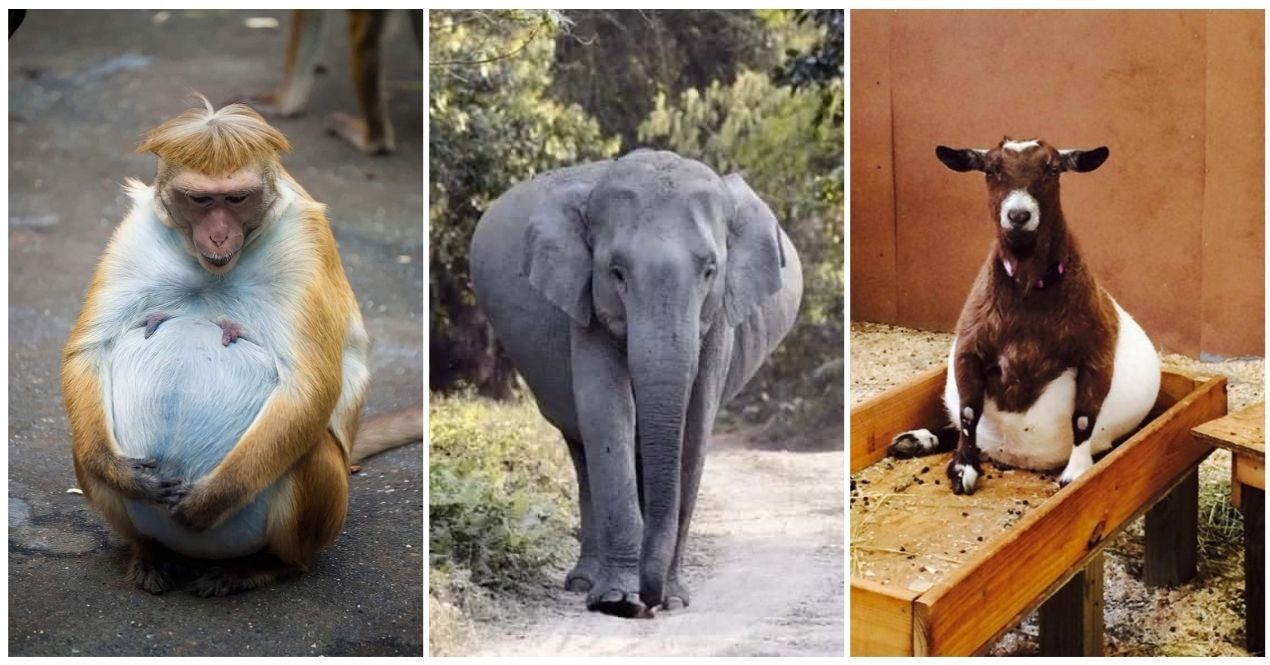
Conclusion
As we reach the end of our heartwarming exploration of animal parenthood, a profound sense of wonder washes over us.
From the meticulous nest building of the weaverbird to the fiercely protective nature of the crocodile mother, the animal kingdom showcases a breathtaking array of parental instincts.
These diverse strategies, honed over millennia of evolution, serve one central purpose: the continuation of life.
Witnessing these incredible acts of dedication reminds us of the powerful force that drives parenthood across all species.
The journey of parenthood, whether in the animal kingdom or our own human experience, is filled with challenges and triumphs.
By understanding the intricate world of animal mothers (and fathers!), we gain a deeper appreciation for the complexities and beauty of nurturing life.
So, the next time you see a bird diligently building a nest or a mother animal fiercely protecting her young, take a moment to marvel at the extraordinary tapestry of parenthood woven throughout the natural world.
It’s a testament to the enduring power of life and the unwavering love that binds parent and child.
Reference Links:
- Elephant Gestation Period: https://www.treehugger.com/animals-with-the-longest-gestation-period-4869368
- Sloth Parental Behavior: https://kids.britannica.com/students/article/sloth/277093
- Kangaroo Reproduction: https://kangaroocreekfarm.com/about-roos/
- Seahorse Reproduction: https://kids.britannica.com/students/article/seahorse/276967
- Emperor Penguin Huddle: https://www.youtube.com/watch?v=F4XygDTA7kQ
- Weaverbird Nest Building: https://www.gardendesign.com/trees/weaver-bird-nests.html
- Crocodile Nesting Behavior: https://nationalzoo.si.edu/animals/american-alligator
- Monarch Butterfly Migration: https://xerces.org/monarchs
- Virginia Opossum Gestation: https://dwr.virginia.gov/wildlife/information/virginia-opossum/
- Paternal Care in Animals: https://phys.org/news/2023-08-animal-father-aging-brains-behavior.html
